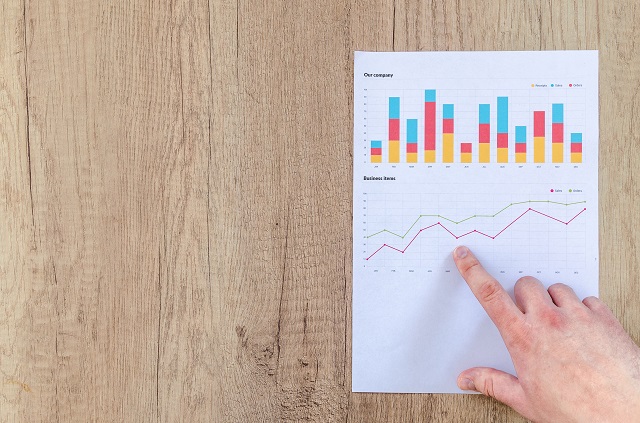How to Analyze Mutual Fund Performance

Have you been overlooking analyzing mutual funds? If so, do not. Neglecting the performance of a mutual fund before buying it is crucial.
The past performance of a mutual fund may not show you the exact future of the fund, but for sure, it can get you to the right set of stocks from the market.
When you know what you need to avoid and what is good to get close to, you are already going in the right direction in the market. Now, let us understand how to undertake mutual fund performance analysis in this blog.
Why Should One Measure the Performance of a Mutual Fund?
“Mutual Funds are subject to Market Risks” – I bet you have heard this before, and mutual funds do come with a disclaimer, but at the same time, they are one of the best ways to grow your wealth faster than ever.
Do you disagree? You could not. So, are you going to keep these risks from making you wealthier? If not, then an analysis is necessary.
How will you find out what are the best-performing mutual funds? If not for an analysis, you couldn’t. Mutual fund analysis gives you the historical picture of generations and returns from an investment.
Yes, as an investor, you need to look beyond the previous performance of a fund. Further, you need to monitor the returns that can help you make informed decisions that lead to better returns, and the previous analysis of a fund comes in as an exceptional component.
Capital markets keep fluctuating because of the changes in the overall economic conditions. Such changes also disturb the asset allocation of the portfolio.
So this means it can also increase the risk profile of the fund beyond an investor’s requirements. In addition to all this, an evaluation of these funds helps you to compare investments that are similar to each other. Moreover, a mutual fund portfolio needs periodic rebalancing because of fundamental attributes or when there is a change in the fund manager.
How to Track Mutual Fund Performance – Your Guide to Doing it Easily
-
Scale Performance of the Fund Against the Benchmark
Do you know what the first thing you should check for while analyzing a mutual fund?
Well, the first thing is to analyze the performance of the benchmark. I am sure that you are aware that every fund has a benchmark that is used to track and measure its performance.
A good mutual fund is one that constantly beats its benchmark in the long term. When a fund generates higher returns than the benchmark, the excess is known as the ‘alpha’ of the fund.
When you are investing in a mutual fund, and most importantly, it is your hard-earned money. You should be expecting the fund to cross its benchmark and recreate a higher alpha. It can be your first analyzing parameter.
-
Always Compare Similar Funds
While you are comparing a fund, you cannot compare two different funds, and it will never give you the right answers.
A simple way to explain this is that you can only compare apples to apples, not apples to mangoes, and by this, you will never know which is better. Unless it is apples to apples, you always know which is the better apple of the bunch.
-
Consider Expense Ratio
The expense ratio might seem small to you at the beginning, but you must know the bite it can take out of your investments. What is an expense ratio?
An expense ratio is a fee that is charged by the fund house to manage your portfolio. These expenses also include manager fees, distribution, investor transactions, and various other charges.
-
Market and Economic Cycles – The External Factors that Matter
Talk to as many investment advisors as possible, and you will most likely get different answers from each of them. They can tell you what is important to analyze when and how you can determine which is the best mutual fund for you. Just a fund internal matters to a year of bad performance.
Is that the right way you could measure a fund? Definitely not. So do not forget to evaluate according, externally and internally.
-
Risks – A Byproduct you Cannot Neglect
You know that mutual funds come with risks. It is inevitable, we all know that. Though you cannot eliminate this when taking the step of investing in mutual funds, you can obviously weigh it according to your risk appetite.
All you need to do for this is to analyze your mutual fund’s risk profile, and this can be done using a riskometer. Stock market indices are mandated to disclose the risks of a mutual fund to investors, and they can be of great help to you.
-
A Manager’s Tenure
The manager's tenure of the selected fund cannot be forgotten either. You might want to consider the fund if the manager's tenure is approximately a 3-year period.
This is because the current fund manager receives credit for the 3-year returns, but he does not receive complete blame for the low 10-year returns.
Summing Up How to Check Mutual Fund Performance
It all begins with learning how to analyze. Once you master this, it will automatically help you to choose the best mutual fund for you.
Knowing your whereabouts with mutual fund analysis can go a long way in investments and the stock market in order for you to make the right investment and trading decisions.
|
You May Also Be Interested to Know |
|
|
1. |
|
|
2. |
|
|
3. |
|
|
4. |
|
|
5. |
How to Choose Mutual Funds in India |
Disclaimer: This blog is solely for educational purposes. The securities/investments quoted here are not recommendatory.
|
Check More AMCs |
|